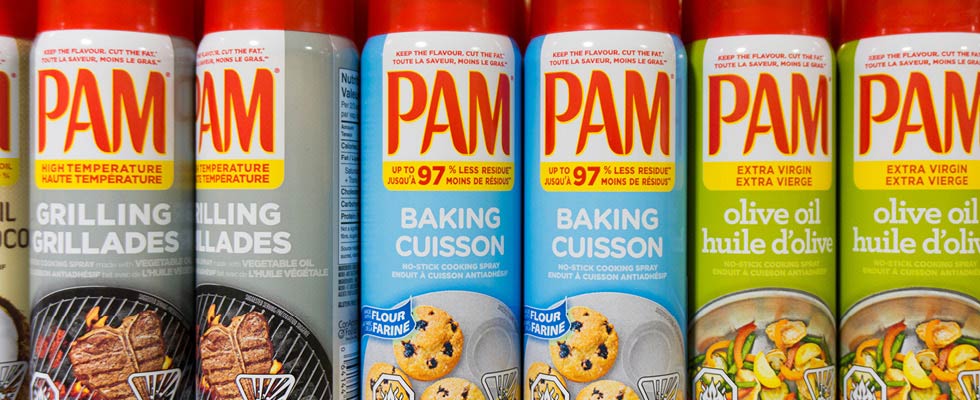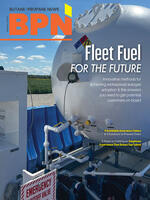
Propane has many uses. As most readers are aware, one of those uses is as a propellant in various canned spray products. In a recent decision, a federal court in New York considered, and significantly limited, the claim of a woman who sought recovery for serious injuries when a can of cooking spray containing propane propellant allegedly exploded. The case is Bozick v. ConAgra Foods Inc.
On Sept. 11, 2018, Grace Bozick was alone in her apartment. Around 7:30 in the evening, she decided to cook a steak for dinner. At first, all went well. She sprayed her frying pan with PAM cooking spray (manufactured by ConAgra Foods Inc.), put the steak in the pan and started to cook it at the high setting on the left front burner of her stove. She set the cannister of PAM spray on the counter about 7 inches from the edge of the stove and about 13 inches from the center of the burner.
The PAM cooking spray cannister included the following warning and caution statements:
- “Can may burst if left on stove or near heat source”
- “Contents under pressure”
- “Do not store above 120 degrees Fahrenheit”
- “Store at room temperature”
- “Flammable”
Bozick cooked the steak for about 6 to 8 minutes and then turned the burner off. She then filled the pan with water and soap, put it back on the left front burner and turned the burner on to the low setting. She left the kitchen, ate her steak and returned after about five minutes.
Bozick later testified that when she returned to the kitchen, there was an “explosion,” and she saw flames coming from the PAM cannister. She was injured and immediately pressed a button outside the door of her apartment, calling the doorman.
The doorman arrived, and while he remained in the apartment, she took a taxi to the hospital, as she thought it would be faster than an ambulance. In the meantime, the doorman cleaned the kitchen, and no photographs were taken of the scene of the incident before the cleaning was done.
Differing Accounts
Bozick said that before she left for the hospital, she called her brother and told him that she had been injured by an exploding can of PAM cooking spray. Her brother later corroborated this. However, there was some question as to whether Bozick’s injuries were caused by an exploding cooking spray can. When she arrived at the hospital, she was interviewed by hospital personnel about how the accident happened. The intake notes state:
- “Patient was cooking dinner in the oven around 7 p.m. on 9/11, and while she opened the stove, it blew up.”
- “She is unsure if water from the pot burned her or if her hand caught fire.”
- “She reported that hot grease spilled onto her right hand and wrist. Also splashed on her right cheek.”
- “Patient is uncertain if her hand caught fire or if the burn is from water in a pot; she was soaking on the stove in an attempt to clean it.”
Bozick later disputed the accuracy of these notes, claiming she never made the quoted statements and that she was in shock and on painkillers when the statements allegedly were made. However, they will clearly present a problem for her at trial. Defense trial lawyers always review emergency room intake documents very carefully for the injured person’s descriptions of the incident, which are often the most truthful accounts.
Design & Manufacturing Defects
Bozick sued ConAgra Foods Inc. She claimed that the PAM cooking spray cannister was defective and that its rupture resulted in the alleged explosion that caused her injuries. Specifically, she argued that the cannister was defectively designed in a way that made it susceptible to rupture and explosion, and that there was a manufacturing defect that resulted in the rupture and explosion in Bozick’s apartment. She also asserted that the warnings on the cannister were inadequate. ConAgra Foods Inc. filed a motion for summary judgment, seeking a dismissal of the lawsuit.
In its ruling, the court first addressed the design defect claim. The plaintiff made two arguments on this point. First, she argued the cannister was required to withstand an internal pressure buildup of up to 180 psi. However, her experts contended that ConAgra Foods Inc. specified only the thickness for the raw steel that was used in the manufacture of the cannister. It did not specify how thick the steel should be after the manufacturing process was complete. This, the experts contended, allowed the walls of the cannister to be thinner and made the cannister susceptible to failure at an internal pressure buildup of less than 180 psi. The court found insufficient evidence to support this claim:
“Plaintiff, however, fails to provide sufficient evidence from which a reasonable jury could find that Defendants’ cans, as a result of the failure to provide specifications for the post-manufacturing thickness of the bottom of the cans, are not designed to reliably ensure a minimum buckle pressure of 180 psi.”
BLCBE
Bozick next argued that the event in her kitchen was a Boiling Liquid Collapsed Bubble Explosion (BLCBE). This is similar — on a much smaller scale — to what those in the propane industry know as a Boiling Liquid Evaporating Vapor Explosion, or BLEVE, which is the catastrophic high-pressure rupture of a propane tank or cylinder. Here, Bozick’s experts argued that the cannister and the cooking spray were defectively designed because the mixture of cooking oil and propane propellant made the cannister susceptible to a BLCBE event when the contents are shaken and sprayed in a kitchen environment.
The court rejected this claim as speculative. Among other things, the court addressed multiple problems in the analysis conducted by one of plaintiff’s experts, Mr. Eagar:
“In addition, even assuming that the ‘process of spraying product from the container sets up the potential for BLCBE,’ Eagar does not explain why the can did not explode until approximately fifteen minutes after Plaintiff sprayed it. Eagar also implies that a key trigger of the BLCBE is shaking the can; however, when asked at his deposition whether Plaintiff shook the can before using it, Eagar stated that he did not ‘remember [her] testifying to it.’”
The court then turned to the manufacturing defect claim. In this claim, Bozick argued that even if the cannister was properly designed, it failed on the day of the incident because of a specific manufacturing error in the fabrication of this one cannister.
The court noted that no evidence was presented of any specific manufacturing defect in Bozick’s cannister.
However, it held that under New York law she could still argue, based on circumstantial evidence, that there must have been a manufacturing defect in the cannister for it to explode under the circumstances that she described.
Warnings
Finally, the court addressed the failure to warn claim. It rejected this claim because the plaintiff had presented no evidence that ConAgra Foods Inc. knew that the cannister could explode under the circumstances she described:
“Without evidence of Defendants’ knowledge or reason to know of the possibility of an explosion from the circumstances Plaintiff describes, Plaintiff cannot claim that Defendants should have warned consumers of such dangers.”
In addition, the court found no evidence that a different warning on the cannister would have prevented Bozick’s injuries:
“Specifically, there is no evidence that Plaintiff would not have purchased the product if given any of these proposed warnings, that she misunderstood the risks as a result of Defendants’ failure to give them, or that Plaintiff would have used the product any differently had Defendants given a different warning.”
The net result of the ruling is that Bozick’s claim against ConAgra Foods Inc. survives and can be presented to a jury. However, it has now been significantly limited. She can no longer argue that the cannister was defectively designed or that its warnings were inadequate. She can attempt to convince a jury that the cannister she bought was defectively manufactured, but she can only do this with circumstantial evidence.
While this case is interesting, it is highly unlikely that the use of propane as a propellant in cooking spray and other similar cannisters presents a significant liability risk for propane distributors. There was no such claim asserted in this case, and I am not aware of any such claim having been made in my 37 years of representing propane distributors. As is apparent, the attack here is on the cannister and not on the propane inside the cannister.


